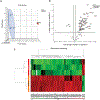Neuroprotective Mushrooms
- PMID: 40370689
- PMCID: PMC12077610
- DOI: 10.1515/nipt-2024-0004
Neuroprotective Mushrooms
Abstract
Alternative medicines commonly supplement or, at times, replace standard medical treatment. One area of increasing attention is disease-modifying medicines for neurodegenerative diseases. However, few such alternatives have been investigated thoroughly with an eye toward understanding mechanisms of action for clinical use. Medicinal mushrooms have important health benefits and pharmacological activities with anti-inflammatory, antioxidant, antibacterial, antiviral, immunomodulatory, digestive, cytoprotective, homeostatic, and neuroprotective activities. Edible mushrooms are known to play roles in preventing age-related diseases. Several studies have revealed that polysaccharides, terpenes, and phenolic compounds are chemical components derived from mushrooms with pharmacological activities. Due to limited effective protocols for mushroom protein extraction for proteomic studies, information about these medicinally related proteins and their biological functions remains enigmatic. Herein, we have performed proteomic studies of two mushroom species Laricifomes officinalis (agarikon) and Grifola frondosa (maitake). These studies serve to uncover a foundation for putative proteome-associated neuroprotective processes. The recovered proteins from both species show multiple cell-specific signaling pathways including unfolded protein response, and mitochondrial protein import as well as those linked to BAG2, ubiquitination, apoptosis, microautophagy, glycolysis, SNARE, and immunogenic cell signaling pathways. This study uncovered mushroom proteome-associated proteins which serve to better understand the structural and functional properties of mushrooms used as alternative medicines for broad potential health benefits.
Keywords: agarikon; maitake; mushroom; neuroprotection; proteome.
Conflict of interest statement
Competing interests No conflicts of interest.
Figures




References
Grants and funding
LinkOut - more resources
Full Text Sources
